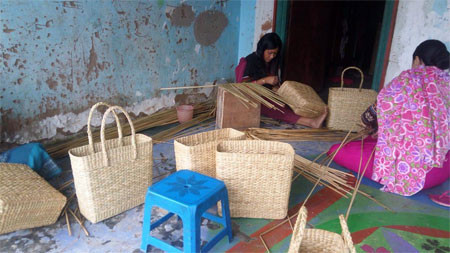Crafts, a temple of inheritance value, are the stories and mastery passed through generations that offer colourfully visualized narrations. The sustainability and feasibility of the crafts sector have become a stipulation, particularly in an age of rapid communication, urbanization, and global change. The outlook of Indian crafts portrays many descriptions and shades of meaning that reflect interactions with socio-economic, cultural, and religious forces. The crafts manifest themselves in the pervasive household products crafted with originality from local materials, skills, and labours.
The Origin of Crafts in India
The art of crafting is deeply embedded in the lap of Indian history and heritage. It was around 5,000 BC when the tradition of handmade crafts used to orbit around religion. Around 3,000 BC, during the Indus-Valley civilization, several forms of arts and crafts were initiated, which can be found in museums and art centres today. The Vedic Age experienced a significant rise in crafts, majorly in the fields of textile, stone, metal, painting, pottery, and wood.
In the 3rd century BC, there was a shift in the trend, and the art of sculpturing and making contemporary jewellery bloomed during the Mauryan age. The craftsmen during the Gupta period (320-647 AD) outshone in jewellery-making, woodcarving, sculpting, stone carving, weaving, and different other art forms. However, the handicrafts of textile, leather products, and metalworking piloted during the later ages, reflected a strong foreign influence on Indian crafts, which later on transformed as per the scenario of India. Throughout the ages, the crafts of India thrived and evolved, keeping up with the needs of the public.
Significance of Indian Crafts
The Indian handicrafts sector plays a significant role in the country’s economy. The importance of handicrafts has increased a lot during recent years, because of their economic and cultural values. The Indian Handicrafts industry is a decentralized and labour-intensive industry. It provides employment to a large number of craftsmen in rural and urban areas of India and generates considerable foreign exchange for the country by showcasing its cultural heritage. Indian art and craft have great potential, as they hold the key for supporting not only the millions of artisans and craftspeople spread over the length and breadth of the country as it employs almost 6 million artisans, including women of society.
Eco-Friendliness of Handicrafts
The most attractive thing about handicraft items is their eco-friendly property. These types of handicrafts mostly help to recycle waste. The most used raw materials come from recycled wastes like bottles, plastic cups, cans, cardboard boxes, pins, buttons, magazines, wood, and old clothes. It also generates the least amount of waste. Handmade products are completely free of hazardous materials and chemicals and are more focused on biodegradability and environmentally friendly components.
Contemporary Scenario
Owing to the presence of a rich and cultural heritage of design inspiration, exquisite skillful craftsmen, and plenty of raw materials, Indian artisans despite the industrial and technological revolutions, hold their position in today’s competitive world. Indian crafts acquire connoisseurs from around the world and preserve and promote the Indian handicraft industry across the globe. Indian craftsmen are in demand even abroad. Handcrafted jewellery, hand-printed textiles and scarves, embroidered and crocheted homeware, hand-knotted rugs, Indian silks, shawls, leather and a large variety of household and decorative items are some of the most popular crafts that are exported from India to other countries.
Despite the development of the handicrafts industry and the measures reserved by the government to promote this industry, the average earning of a craftsman when compared to that of other fields is very low in India. To overcome this challenging situation, the need of the hour is to help the Indian craftsmen and promote their arts with proper marketing and training them with technical knowledge. Artsofindia.in is one such platform that is making every possible effort to showcase the works of these artists and popularize Indian crafts based on their rich cultural and historical heritage and sustainability. The revenue earned by selling the products on this website goes directly to support the rural artisans.
Most of the Indian crafts are produced with 100% eco-friendly techniques with minimum wastes and play an important role in protecting the degenerating environment.
Picture Source: ArtsofIndia



